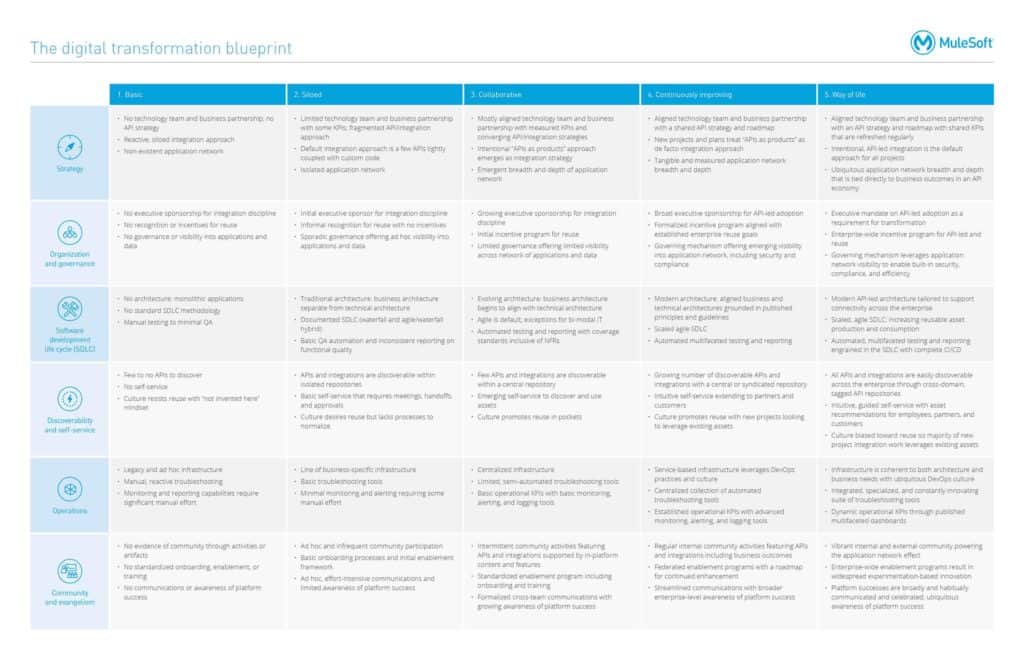The fiscal year is ending and once again, your efforts to get modernization improvements funded haven’t planned out. You know that this lack of funding won’t stop any of your partners from decrying the competency or effort of IT.
You can already hear the same old refrains from the usual cast of characters: “IT is slow and burdensome. Why would we invest there when we need to focus on achieving our revenue growth targets?” or, “we need to differentiate our product and product marketing and IT isn’t capable of delivering that. How could an investment in infrastructure possibly be justified at this time?” and even, “IT labor costs are already the large majority of our investment and it’s not helping us win raving fans so far… can’t you for once stop telling us what to do? The what is our job, yours is the how.”
It’s been this way forever; talented team members that walk out, roadmapping efforts that don’t go anywhere because nobody sees the impact they will have on the business, and conflict between business and IT that is threatening to boil over yet again.
Does this Gordian knot seem familiar? Does just reading about this make you upset and frustrated? Good.
Because I’m about to give you a blueprint that will help you unify your organization’s business and IT leadership strategy on a single path to improve IT capabilities.
Mapping your digital transformation journey
As organizations map their digital transformation journey, they should first look to the patterns that have been formed as a result of natural customer behavior. This path often represents the shortest or most easily navigated route between an origin and destination and, when observed and analyzed correctly, can be the key to guiding their successful evolution in the digital world.
Through our work with more than 1,600 enterprises, we’ve observed patterns in the way businesses tend to follow along their digital transformation journey. These concepts apply to organizations across all industries. We have tested and validated our methods with customers and created the digital transformation blueprint below to share learnings from their best practices.
Businesses with strong digital transformation strategies and clear goals tend to be most effective in aligning their organization to perform. While this may sound intuitive, we’ve seen many organizations dive head-on into design and implementation without first agreeing on the broader vision for the company or aligning to leadership priorities. More often than not, these initiatives end up blocked by executives or stalled due to lack of adoption.
Each of these characteristics are important in relation to one another. This is where the digital transformation blueprint comes in, mapping the maturity of an organization’s characteristics to provide a holistic view of digital competitiveness and actionable path forward.
Your digital transformation blueprint
Though there is no one-size-fits-all path to digital transformation, there is a set of standard characteristics that effectively all sophisticated enterprises share and common relationships among those characteristics. With MuleSoft’s digital transformation blueprint, an enterprise can easily assess its digital competitiveness and identify the path forward.
The digital transformation blueprint has been instrumental in helping our most successful customers establish and advance their application network maturity and integration capabilities. The blueprint encompasses six key elements:
- Strategy
- Organization and governance
- Software development life cycle (SDLC)
- Discoverability and self-service
- Operations
- Community and evangelism

In this blog post, we will take a deep-dive into the strategy element of the digital transformation blueprint. To access the full blueprint with information on each of the five key elements, download the full Hands-on guide to digital transformation.
The key elements of a transformation strategy
How does your enterprise think about, model, and develop a strategy that links API and integration capabilities with business transformation outcomes and technology?
In today’s digital world, platform businesses — businesses that create value by facilitating exchanges between people, data, and devices — haven’t just disrupted traditional business models, they have shifted the power of the market from the hands of suppliers to consumers. They do so by tapping into the exponential value of the network effect — a phenomenon in which a product or service increases in value with each user it adds — to ensure the
work they are doing today provides exponential return in the future.
An organization’s success is now determined by the digital platform it uses to support its business and the business model that its platform enables. This requires a tight strategic alignment between business and IT leaders, who should function as partners in determining a shared set of KPIs that measure API consumption patterns as they relate to business outcomes, such as which APIs drive adoption and which APIs generate the highest conversions. When measured consistently, and all the stakeholders understand the KPI correlations, digital businesses are able to glean strategic business insights from these KPIs — such as predictability of transaction patterns and new expansion opportunities — much faster than traditional businesses have been able to in the past.
With an aligned business and IT strategy in place, the next critical element is a normalized, intentional API-led approach to integration. This approach emerges once the practice of managing APIs as products — core business assets instead of IT projects — becomes the default approach for all projects. The third critical element of a mature digital organization is an application network with ubiquitous breadth and depth. Tying the application network strategy directly to business outcomes allows the organization to tap into the network effect to drive business value. Each API added to the application network adds exponential value to the business. As the application network extends across the business, the business as a whole benefits from the outcomes.
Each of the remaining elements of the model are detailed in Mulesoft’s just released digital transformation blueprint which not only details the elements of the model but also points to a 3-step plan for how to develop a more grounded plan that addresses the true complexities of kicking off and accelerating a digital transformation.
Where to go from here: Enterprise implications and recommendations
Establish a baseline of your digital transformation maturity
The first step in the digital transformation journey is to assess the digital maturity of your application network and integration capabilities. Establishing a baseline will allow you to understanding critical areas of opportunity and provide a benchmark to measure success along the way. The digital transformation blueprint lays out the assessment process, which can be completed in just a few weeks and then repeated as necessary to track improvements and clarify traceable correlations in business and technology results.
Develop and execute a program
Multifaceted capability development inside of an enterprise that is focused on business outcomes requires perseverance and strategic insight. Initiative and program planning processes are often based on a “fit for purpose” model where teams and leaders are recognized and rewarded for meeting specific delivery goals that center around dates, scope, and quality. Without a new structure or mechanism that aligns short term delivery with long term capability improvements, teams often follow plans that ritualistically build new siloes or contribute to those that already exist. Transformational initiatives require a program that embraces new models and rituals designed to help autonomous teams adapt to new expectations on delivering software designed for reuse.
Get the incentives right
Existing corporate reward systems often incentivize behaviors that align with the status quo. Creating opportunities to recognize and reward individuals, leaders, and teams is often necessary to help employees and managers understand that the enterprise values efforts that put enterprise goals ahead of individual goals. Once organizations put the right incentive structure in place to rewards actions that contribute to transformation, such as API-led integration and reuse, the people, process, and technology will fall into place. Skewing towards a multifaceted approach with varying techniques — such as attachment to compensation incentives, formalized socialization, and compelling communications that target key audiences — will gain top down executive support and bottoms up commitment.
MuleSoft’s customers span the globe and come from a myriad of industries. One thing our most successful customers agree on is that without a solid conceptual model and a set of tools to visualize and drive success, keeping the enterprise sufficiently focused and grounded to start and complete their modernization efforts can feel like a sisyphean effort with little chance for meaningful change.
Download the digital transformation blueprint to start your step-by-step maturity assessment today.









